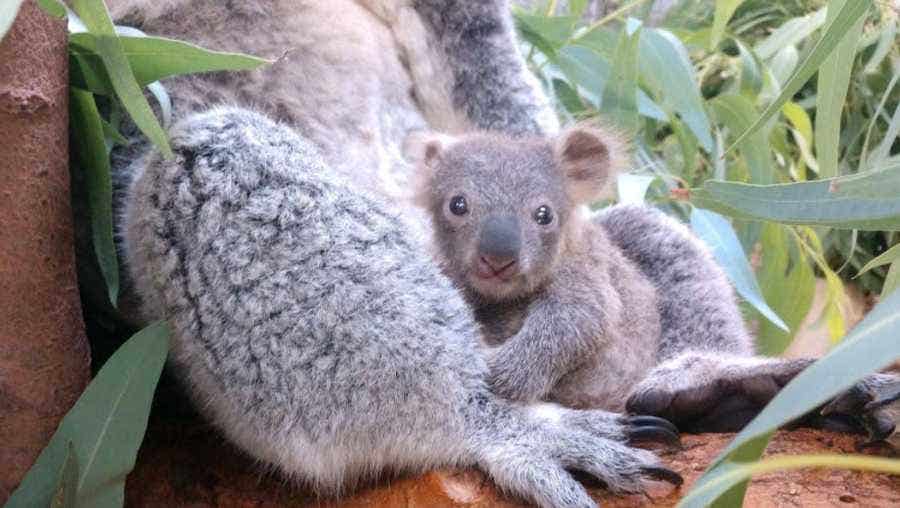For the first time in nearly 10 years, the Cleveland Metroparks Zoo is welcoming a baby koala
For the first time in nearly 10 years, the Cleveland Metroparks Zoo is welcoming a baby koala.

[Aug. 26, 2020: Joshua Shavit]
It's been 10 years since the last birth of a baby koala at the Cleveland Metroparks Zoo.
The baby koala, also known as a joey, is the first for mom Mackenzie, and dad, Nyoonbi.
Zoo officials said as joeys stay in their mom’s pouch for about 6 months, keepers have been keeping a close eye on Mackenzie and first noted possible pouch movements in May.
The joey officially left the pouch on Tuesday and climbed onto its mom’s lap.
Guests will be able to see the mom and joey at the zoo's Gumleaf Hideout in Australian Adventure.
Like these kind of stories? Get The Brighter Side of News' newsletter.
Want to learn more?
The breeding season for Koalas is approximately August to February. This is a time of increased amovement for Koalas, with sound levels increasing as males bellow more frequently. This is also when the young from the previous year leave their mothers and disperse. This period is the busiest for Koala carers, as suburban Koalas are on the move, crossing paths with cars and dogs, and higher rates of stress-induced sickness.
Females generally start breeding at about three or four years of age, usually producing one offspring each year. However, not all females in a wild population will breed each year; some produce offspring only every two or three years, depending on factors such as age and habitat quality. In the average female's 12-year life span, she may produce five or six offspring over her lifetime.
Once conceived, it is only 35 days before the birth of the baby Koala, called a "joey". The newborn is tiny (at roughly 2 centimetres long and less than 1 gram in weight), and looks like a pink jellybean; totally hairless, blind, with no ears.
The joey makes its way from the birth canal to the pouch completely unaided, relying on its already well-developed senses of smell and touch, strong forelimbs and claws and innate sense of direction. Once inside the safety of the pouch, the joey attaches itself to one of the two teats, which swells to fill its mouth. This prevents the joey from being dislodged from its food source. The mother contracts her strong sphincter muscle at the pouch opening to prevent the baby from falling out.... Read More
Joseph Shavit
Head Science News Writer | Communicating Innovation & Discovery
Based in Los Angeles, Joseph Shavit is an accomplished science journalist, head science news writer and co-founder at The Brighter Side of News, where he translates cutting-edge discoveries into compelling stories for a broad audience. With a strong background spanning science, business, product management, media leadership, and entrepreneurship, Joseph brings a unique perspective to science communication. His expertise allows him to uncover the intersection of technological advancements and market potential, shedding light on how groundbreaking research evolves into transformative products and industries.
